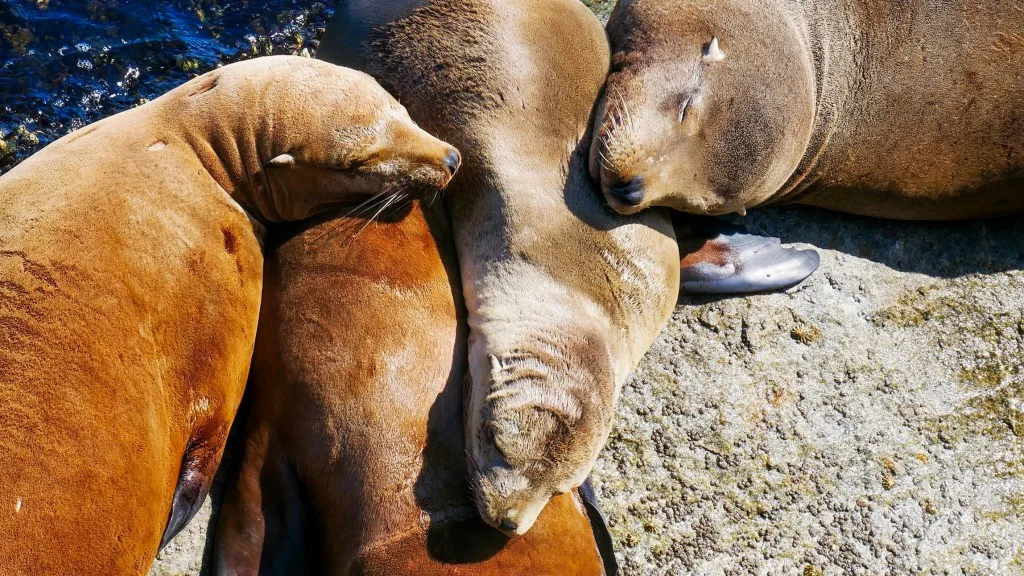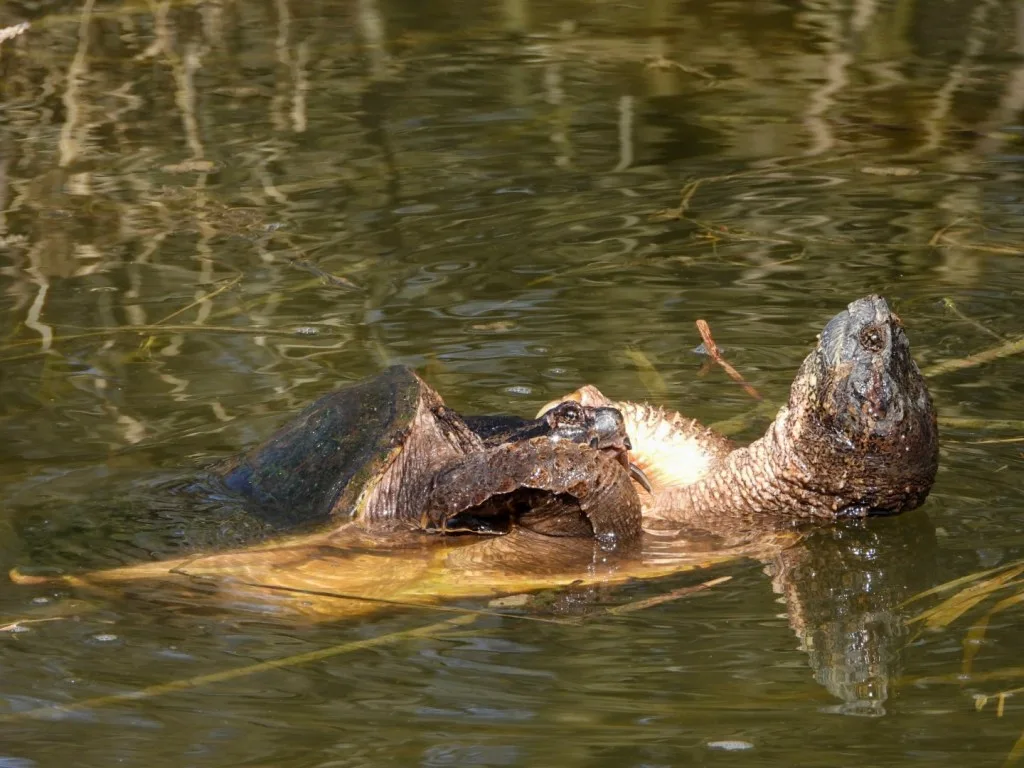When you’re checking out the sights at Maine’s only national park, keep an eye out for the wildlife as well. Most animals you encounter will be completely harmless, especially if you follow some common-sense guidelines.
With some of them, you just can’t be too careful.
Let’s find out which creatures you should stay on alert for along Maine’s incredibly beautiful coastline.
What Makes a Creature Dangerous?
Many members of the animal kingdom appear to be cute and cuddly, while others project a more menacing vibe. However, it’s not always the biggest creatures that pose the most danger. Whether large or small, what many animals have in common is they will fight to protect their turf or family. In a way, you have to admire that about them.
After all, wouldn’t we do the same thing?
When touring gorgeous natural areas such as Acadia National Park in Maine, it’s important to remember that we’re only visiting. Legally, the people of the United States own these public lands. In reality, though, they belong to the countless other living things that call them home.
If you don’t respect the animals’ space or engage in other careless behavior, you can end up paying the price. It might be a little bite, sting, or even a terrifying physical attack from a huge, ferocious predator.
About Acadia National Park
About 40 miles from Bangor, Acadia National Park covers 47,000 acres in what’s called the Midcoast region. The headquarters is in the town of Bar Harbor, on Mount Desert Island. This area is in a part of the Atlantic Ocean known as Frenchman’s Bay. It’s actually the oldest national park east of the Mississippi River.
President Woodrow Wilson gave it protection as a National Monument in 1916, and congress designated it as a national park three years later. It’s home to the highest peak on the East Coast, the 1,530-foot Cadillac Mountain.
Pro Tip: Traveling to Acadia? This is How to Spend a Day in Acadia National Park.

The Most Dangerous Animals in Acadia National Park
Acadia National Park isn’t strictly a wilderness area, but it does have quite a bit of wildlife. Many animals in the park may appear tame, but don’t let down your guard for these in particular.
Coyotes
These members of the canine family are not typically aggressive toward people, but you should be careful around them. Coyotes are not as bold as their relatives, the wolves, but they aren’t harmless puppy dogs, either.
They do exhibit unpredictable behavior when they are injured or have an illness, including rabies. They can move very quickly when they need to, and that’s usually what they’ll do to avoid a confrontation with a human. Still, you should never deliberately approach one.
Black Bears
Surely all campers know not to feed the bears, but a reminder never hurts. The best way to avoid encounters with black bears is to keep your food and trash secure. That way, you won’t lure them into the camp with the promise of a free meal or snack.
There are very few black bears in Acadia National Park. Thankfully, their natural food sources – things like skunk cabbage and blueberries – are abundant there.

Harbor Seals
You certainly don’t see harbor seals everywhere you go, so it’s tempting to want to see them up close. Here at Acadia, they love to sun themselves on the rocky shoreline.
It’s OK to move in for a quick photo, but don’t linger, and don’t touch one. Some of them carry various parasites and diseases, including types of influenza, tuberculosis, and herpes.
Snapping Turtles
While most of Acadia’s animals aren’t confrontational, these snippy reptiles quickly come out of their shells. When they are on land, they are prone to establishing their territory with a sudden chomp.
They also have sharp claws, so it’s best to let them be.
The Most Dangerous Creepy Crawlies in Acadia
Sometimes it’s the little things you have to worry about. These park residents from the insect world are particularly pest-like.
Ticks
Keep a running inventory of your freckles and moles so you’ll be able to easily spot a tick when it hitches a ride. These clingy critters are nothing to laugh about, though.
They can spread serious illnesses like Lyme disease and Rocky Mountain spotted fever. They are a good reason to wear light-colored clothing when you’re outdoors so that you can see them better.
Black Flies
Commons house flies can be annoying, but these little bloodsuckers take it to another level. They are a bit larger than common flies and will incessantly bite you, particularly on the head and neck.
They are most common along the water in early summer. Each bite carries a powerful sting, and the swelling and itching can last a few days. Black flies are one of many good reasons to pack insect repellant.
The Brown Tailed Moth
You might not think of a caterpillar being dangerous, but these can cause rashes, headaches, and respiratory problems.
These brown caterpillars are the young versions of what become brown-tailed moths. They are about an inch and a half long and have an uneven white stripe and red spots. Their tiny hairs are toxic, and they can make you break out as poison ivy does.

Are These Creatures Protected in Acadia National Park?
Harassing those seals isn’t just a bad idea; it’s against federal law to disturb a marine mammal. As for the other animals in the park, none are currently on a federal list of endangered or protected species (the peregrine falcon used to be on the endangered list). And while some national parks allow hunting or trapping in some areas, Acadia is not one of them.
Pro Tip: While exploring Acadia National Park, make sure to camp at one of these 5 Best Acadia Campgrounds for RV Owners.
How to Stay Safe While in Acadia National Park
Viewing wildlife makes visiting a national park so enjoyable. To make sure the experience is a positive one, here are some safe practices to follow.
Don’t Feed the Animals
Even if they wander right up to you and beg, it’s better for both parties if you don’t feed wild animals. They have plenty to eat on their own, and it’s a diet that’s better for them. In addition, becoming dependent on humans diminishes their survival skills.
If they’re close enough to eat your food, they’re close enough to bite you or infect you in some other way.
Clean Up Your Campsite
What you consider trash may seem like a gourmet meal to other species. Take a few extra minutes to tidy up. A messy campsite can be an open invitation for unwelcomed visitors. Some animals are attracted to food scraps, sweet-smelling cleaners, and other household products.
Keep Your Distance
It’s natural to want to get as close a look at wild animals as possible, and hopefully a souvenir photo, too. It’s safer to settle for a wide-angle shot or use your telephoto lens if you can. The best way to avoid a bite or an attack is to remain a safe distance away.
Stay On Trail
Sure, there’s a lot more to see off the trail, but more dangers are lurking there, too. Straying from the beaten path increases your chances of encountering a dangerous animal. It could be a big one, like a sleeping black bear, and most certainly a host of ticks and spiders. Play it safer by staying on established trails.
Stay Safe in Acadia Park
Acadia National Park is one of the most gorgeous places in Maine, and many animals love it there. Chances are you can coexist peacefully with the wildlife, especially if you take some precautions. Knowing what animals live there and which are potentially dangerous can prevent a pleasant visit from becoming a disaster.
What animals have you encountered in national parks? Drop a comment below!
Discover the Best Free Camping Across the USA
To be honest with you, we hate paying for camping. There are so many free campsites in America (with complete privacy).
You should give it a try!
As a matter of fact, these free campsites are yours. Every time you pay federal taxes, you’re contributing to these lands.
Become a FREE CAMPING INSIDER and join the 100,000 campers that love to score the best site!
We’ll send you the 50 Best Free Campsites in the USA (one per state). Access the list by submitting your email below: